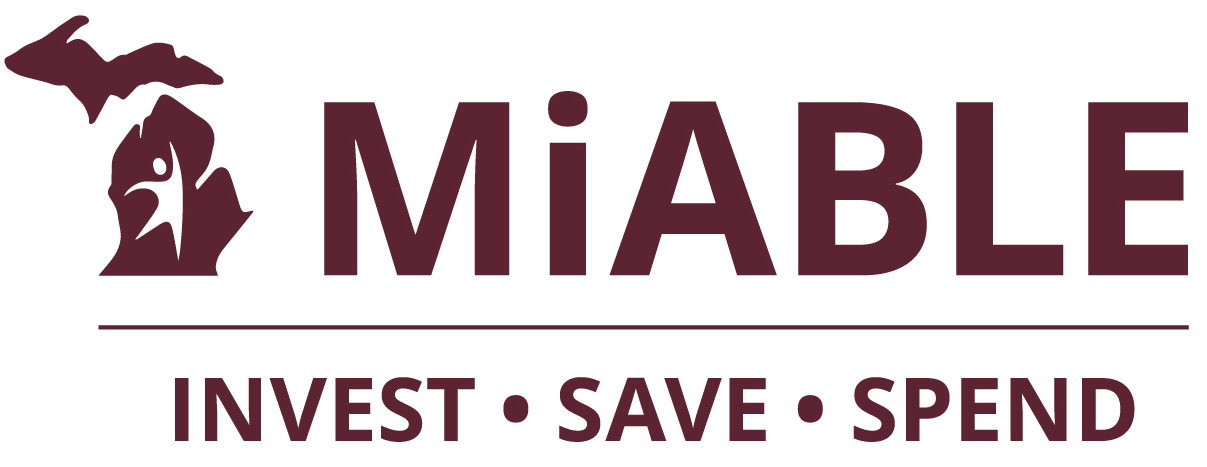Keep your needs-based benefits.

A MiABLE account is in addition to – not a replacement for – other government programs. For example, Medicaid eligibility is never affected. However, ABLE account balances that exceed $100,000 could cause a reduction or suspension of Supplemental Security Income benefits (which is still much higher than the $2,000 limit for other assets).
Plan Highlights
Tax Advantages
Earnings on savings grow tax-free, and no federal or state tax is owed on withdrawals used to pay for qualified expenses.1 Michigan state income taxpayers can claim up to a $5,000 deduction for single filers and $10,000 for joint filers for MiABLE contributions.
A Wide Range of Investment Options
Whatever your savings needs or preferences, you'll find a suitable option ranging in approach from conservative – including a no-risk, federally insured savings account – to aggressive.
MiABLE Card
The MiABLE Card is a debit card you can use to easily spend money from your MiABLE Account.
What is Ugift®?
Ugift® is an easy, free-to-use service that lets friends and family contribute directly into a loved one's MiABLE plan account in lieu of traditional gifts. All gift contributions sent in via Ugift are invested into the account owner's ABLE plan account and can be used to pay for disability-related expenses. MiABLE plan account owners can easily use Ugift by getting a Ugift code that can be entered by family and friends to contribute at any time on UgiftABLE.com.
Flexibility
MiABLE account holders can access their funds at any time for any purpose (although money withdrawn for an unqualified expense may result in tax consequences).
Avoid Hidden Fees
The annualized investment costs on assets per investment option range from 0.28% to 0.34%, depending on which investment option(s) you select.
Each Account is charged an Annual Account Maintenance Fee of $56.00 that is assessed and withdrawn from the Account in the amount of $14.00 quarterly. If Electronic Delivery is selected, the Annual Account Maintenance Fee is reduced to $31.00 and assessed at $7.75 quarterly.
Contribute More with Earned Income
ABLE account owners who earn income may contribute additional funds beyond the annual $19,000 contribution limit. The additional annual contribution amount is equal to the federal poverty level for a one-person household (in your state of residence) or the account owner's gross wages, whichever is less. Working account owners are not eligible to contribute the additional funds if they are already contributing to their retirement through:
- a defined contribution plan
- an annuity contract
- an eligible deferred compensation plan
Account Owners should keep adequate records to ensure the limit is not exceeded. Any increase in contributions could impact tax obligations, so consult a tax advisor before making any such increase. If you are eligible, fill out the Employed Account Owner Certification Form.
Who's Eligible?
Eligible individuals can open the account for themselves, or an authorized individual can open an account on their behalf. There are a few requirements that individuals with disabilities must meet to be able to have an account.
You're eligible if:
- Your disability was present before the age of 26 (starting January 1, 2026, this age requirement will change to before age 46); and
- One of the following is true:
- You are eligible for SSI or SSDI because of a disability
- You experience blindness as determined by the Social Security Act; OR
- You have a similarly severe disability with a written diagnosis from a licensed physician that can be produced if requested.
You must self-certify that you have one of the following:
- Blindness as defined by the Social Security Act (SSA); OR
- A medically determinable physical or mental impairment with marked severed function limitation that has lasted, or is expected to last, at least 12 continuous months or result in death;
- AND you must have a written disability-related diagnosis signed by a physician.
You must re-certify annually.
(Proof of eligibility is not required to open an account. However, you should maintain a record of your diagnosis, benefits verification letter or other relevant documents in the event that you are required to prove eligibility at a later time.)
Open an account on someone's behalf.
Recent ABLE regulations expanded the list of Authorized Individuals who can open an ABLE account. There is no requirement to submit documentation to prove that you have Financial Authority to act on behalf of the ABLE Account Owner, making for a much easier enrollment process. See the Plan Disclosure Booklet for more information on Authorized Individuals.
What are Qualified Disability Expenses?
A Qualified Disability Expense is:
- An expense you incurred when you were an Eligible Individual.
- The expense relates to your disability.
- The expense helps you maintain or improve your health, independence, or quality of life.
- Any expenses related to the eligible individual’s blindness or disability that are made for the benefit of the eligible individual who is the designated beneficiary, including the following expenses but not limited to:
- Education
- Health and wellness
- Housing
- Transportation
- Legal fees
- Financial management
- Employment training and support
- Assistive technology
- Personal support services
- Oversight and monitoring
- Funeral and burial expenses
When savings is used for non-qualified expenses:
- The earnings portion of the withdrawal will be treated as income, so it will be taxed at your tax rate, and will be subject to a 10% federal tax penalty and applicable state taxes.
1 Earnings on non-qualified withdrawals may be subject to federal income tax and a 10% federal penalty tax, as well as applicable state and local income taxes.
2 Please see the Plan Disclosure Booklet for complete details on SSI suspension and any requirements on when you use the funds, to prevent suspension of benefits.
3 Please note that following the death of the account owner, the state Medicaid plan may file a claim against the Account Owner or the Account itself for medical assistance paid under the state's Medicaid plan after the establishment of the account. Please see the Plan Disclosure Booklet for more information.
Take 15 minutes for your future.
Open a MiABLE account now.
Looking to contribute to a MiABLE account?
Download and print Ugift certificates for birthdays, graduations and other celebrations.

